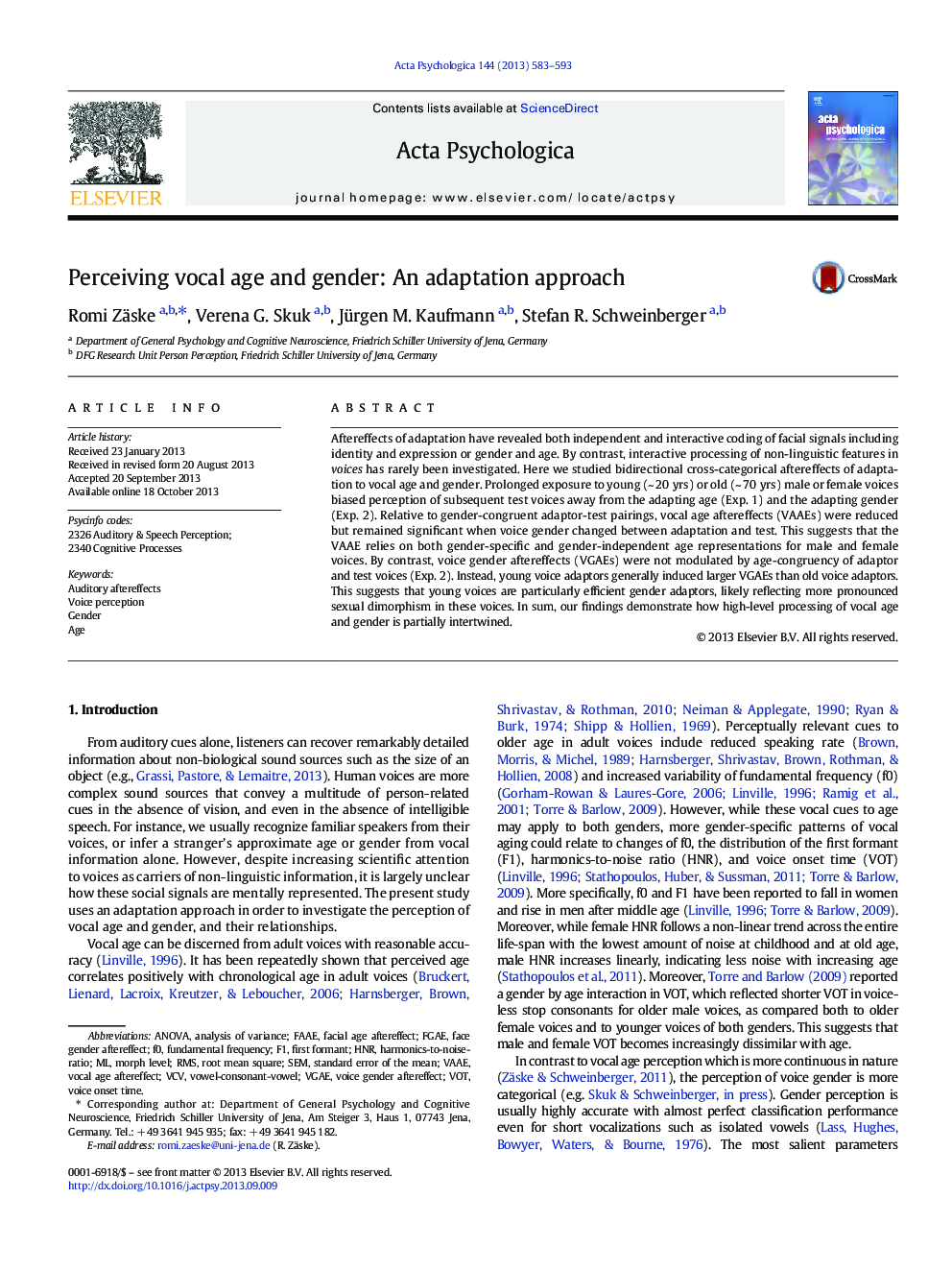| Article ID | Journal | Published Year | Pages | File Type |
|---|---|---|---|---|
| 10453810 | Acta Psychologica | 2013 | 11 Pages |
Abstract
Aftereffects of adaptation have revealed both independent and interactive coding of facial signals including identity and expression or gender and age. By contrast, interactive processing of non-linguistic features in voices has rarely been investigated. Here we studied bidirectional cross-categorical aftereffects of adaptation to vocal age and gender. Prolonged exposure to young (~Â 20Â yrs) or old (~Â 70Â yrs) male or female voices biased perception of subsequent test voices away from the adapting age (Exp. 1) and the adapting gender (Exp. 2). Relative to gender-congruent adaptor-test pairings, vocal age aftereffects (VAAEs) were reduced but remained significant when voice gender changed between adaptation and test. This suggests that the VAAE relies on both gender-specific and gender-independent age representations for male and female voices. By contrast, voice gender aftereffects (VGAEs) were not modulated by age-congruency of adaptor and test voices (Exp. 2). Instead, young voice adaptors generally induced larger VGAEs than old voice adaptors. This suggests that young voices are particularly efficient gender adaptors, likely reflecting more pronounced sexual dimorphism in these voices. In sum, our findings demonstrate how high-level processing of vocal age and gender is partially intertwined.
Keywords
Related Topics
Life Sciences
Neuroscience
Cognitive Neuroscience
Authors
Romi Zäske, Verena G. Skuk, Jürgen M. Kaufmann, Stefan R. Schweinberger,
